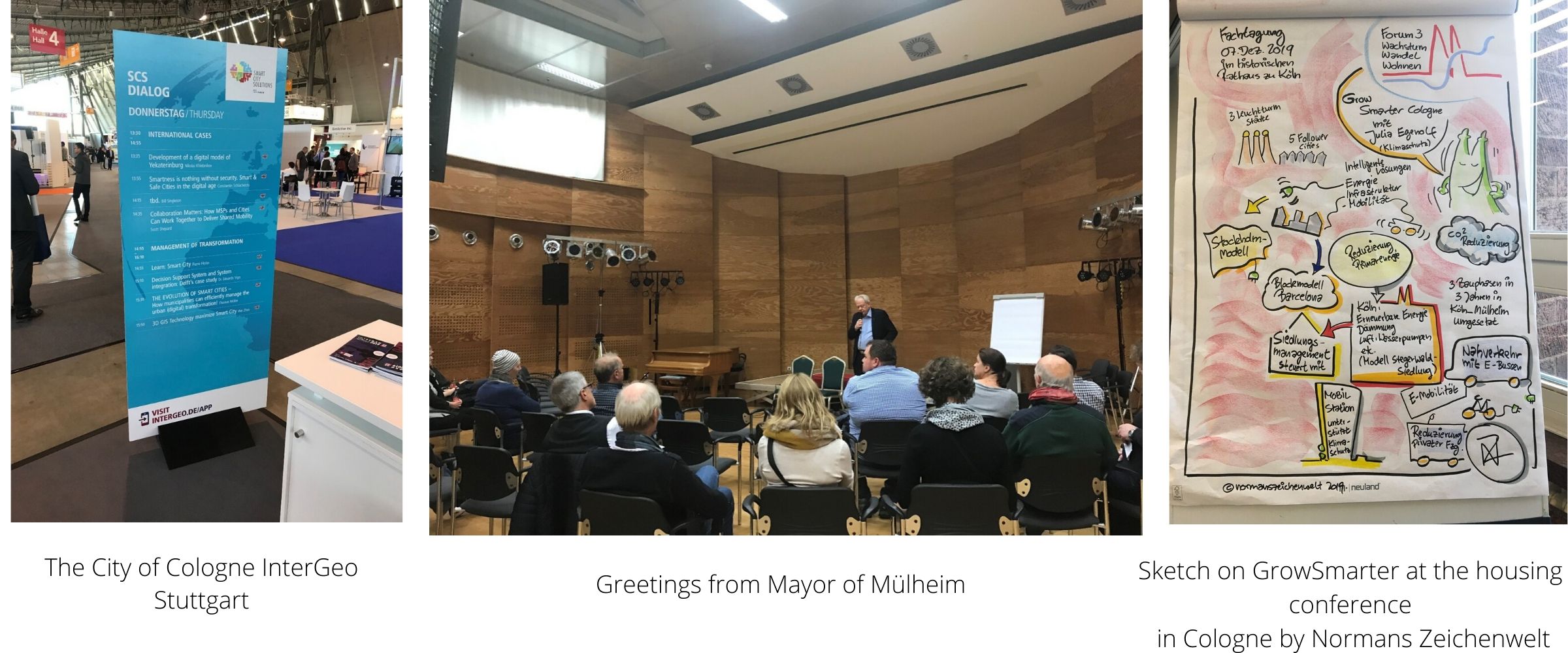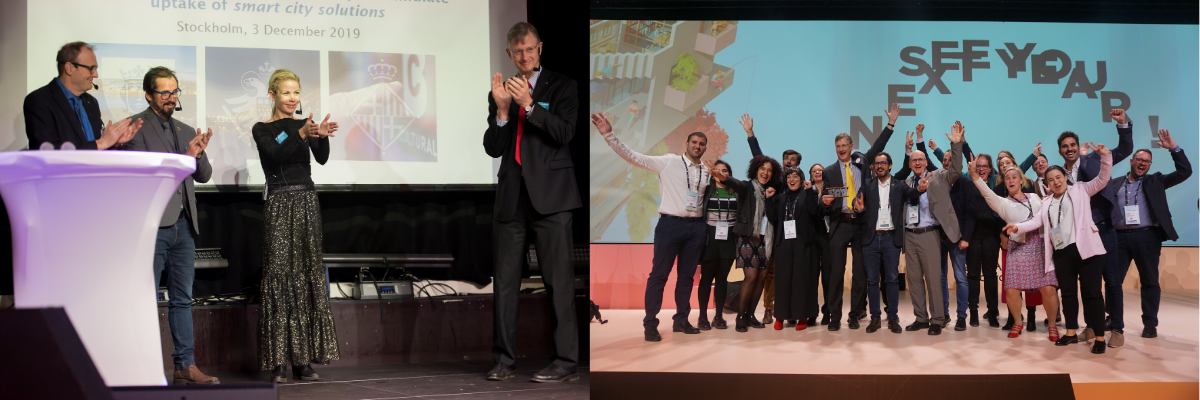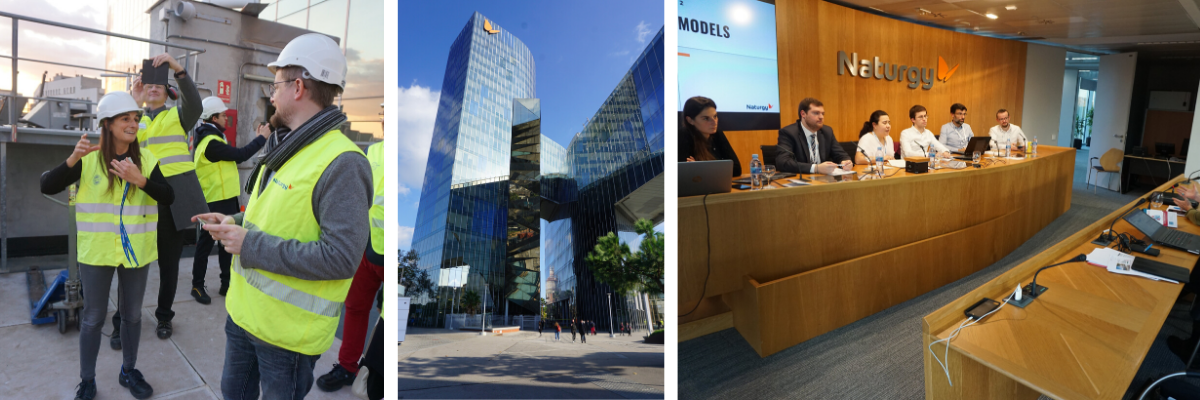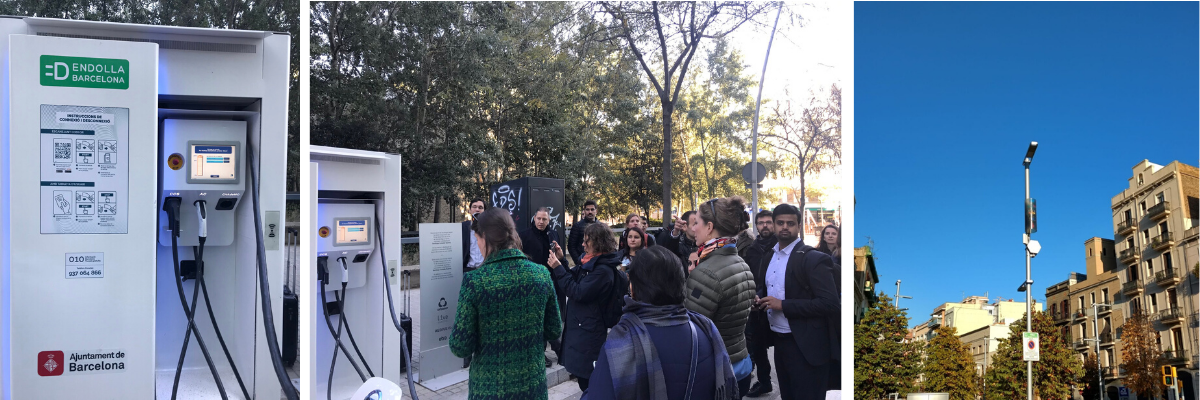The work we have done in GrowSmarter will have a lasting impact on the City of Cologne, but hopefully also far beyond our city limits. The three ‘action areas’ all hold different promises and possibilities for our – and other smart cities – future work.
The replication potential for refurbishment is high all over Europe, especially as public housing owners have the capacity to quickly cover a very large number of dwellings with a single action. There is also the possibility to have lower investment costs by contracting large projects based on our experience in GrowSmarter where we refurbished no less than 687 dwellings.
The City of Cologne is now looking actively into finding other quarters or neighbourhoods where similar measures could be implemented as the next pilots, both in areas with single-family owners and not. We are also developing new guidelines for sustainable city planning to include climate protection measures at an early stage, such as energy and mobility concepts, as part of the early planning procedure for new buildings and areas.
The development of mobility stations and the introduction of E-bike sharing and E-car-sharing as well as shared parking in GrowSmarter currently serves as a role model for the entire City of Cologne in order to improve traffic flows. The public transportation company KVB will purchase more bicycles in Cologne as a result of the successful implementation and will gradually expand the operating area to all of Cologne.
Expansion of charging infrastructure is a priority in Cologne, as in most European cities. The City has developed a comprehensive master plan for future mobility stations including e-vehicles with the plan to implement it as funding arises. Currently, the question of who will be running the mobility stations is being discussed within the various branches of public services.
The third action area of GrowSmarter was integrated infrastructure – looking into the possibilities of using data to better reach our ambitions of fighting climate change and make our cities more sustainable. In Cologne, the topic of a big open data platform has received much attention on a city-wide scale and is in the process of city-wide negotiations regarding the use and implementation of a big data platform with the entire municipality.
These discussions are based on the work we have done to successfully implement big data platforms in GrowSmarter.
City-to-city engagement to share our Smart solutions
The city limits of Leverkusen borders the project area in Mülheim. In Leverkusen, the company Bayer is the largest employer after Ford. Therefore, the commuter flows between Cologne and Leverkusen are an issue to be solved for the city administration of Leverkusen. The City of Leverkusen has been working on mobility concepts for five years and wanted to look at the GrowSmarter solutions in the Stegerwaldsiedlung. Representatives from Leverkusen’s city administration from the areas of urban planning, climate protection and traffic joined us on September 30, 2019 to learn more about our mobility solutions. The solution of a mobility station is currently not available in Leverkusen, but the representatives consider the concept to be transferable. The idea to make the common multi-ticket available for different means of transportation, as done in Cologne, will be tried in any case. Since Leverkusen still has a large buildable area near the city boundary, there are good reasons to begin cooperation with Cologne. The intensive talks will continue on a bilateral level.
GrowSmarter presented itself at InterGeo Stuttgart
The InterGeo Conference and Trade Fair is the largest SmartCity fair in Germany and had 22,000 visitors stop by in September 2019. The Cologne leader on mobility, Carsten Rickers, presented our mobility-solutions in a 2.5-hour session and discussed mobility concepts with representatives from other cities. At another session we shared our evaluation results and our outlook on how the smart city models we have used can be transferred to other cities to further the rollout of smart cities.
The city of Cologne was not alone in presenting our results at this forum and we were joined by successful start-up companies with different smart city solutions. We used our engagement at the conference to discuss how the cooperation between city, business and science can become even more successful in the future. This resulted in important inputs and possible new partnerships between Cologne and industrial partners in future projects.

Local celebration of GrowSmarter
Shortly before the end of the GrowSmarter project, it was important for the representatives of the City of Cologne and the industry partners to invite the residents of the Mülheim project area to a final event on November 7. Without the active participation of local residents, the implementation of the GrowSmarter measures would not have been possible. In particular, the tenants of the Stegerwaldsiedlung had to endure during the energy efficient refurbishment of their apartments; issues such as noise, elimination of parking lots, outsourcing of furniture in containers have been dealt with by the residents and the project partners wanted to thank them with this event.
We invited all the tenants and the District Mayor of Mülheim gave an outlook on what further developments are expected for the district of Mülheim and how the residents will benefit from it. Dr. Barbara Möhlendick, my colleague as GrowSmarter’s site manager in Cologne, briefly summed up the results of the project, emphasizing that residents can be proud of their neighbourhood being a role model for the rest of Europe.
We also had the opportunity to present GrowSmarter at the local housing conference 'Wachstum-Wandel-Wohnen'. The conference was held with multiple internal and external stakeholders on December 7 in Cologne. GrowSmarter was presented in the session on 'Preserving good things and daring new things'. Those kinds of events are a good chance to reach the existing building sector which is becoming more and more important and interesting to all stakeholders.
Cologne at the final conference of the EU-project GrowSmarter in Stockholm
When we set out three years ago, together with Barcelona and Stockholm, to prepare our city to join the fight against climate change, the aim was to develop measures contributing to save energy, reduce CO2 emissions and improve the quality of life for citizens throughout Europe.
So being at the final conference of GrowSmarter was a great experience for Cologne. In the presence of the Mayor of Stockholm Anna King Jerlmyr, the Commissioner of the 2030 Agenda 2030 at the City of Barcelona Miquel Rodriguez and the Vice-Mayor from Cologne Dr. Heinen, the success of the project was clearly presented.
City officials agree that the project is a major milestone in sustainable urban development and will therefore be a model for other cities in Europe. This already applies to the five Follower Cities (Cork, Graz, Suceava, Valetta and Porto).
The results are so convincing that the project has won numerous awards and prizes, such as in Cologne the special award of the BMWi on intelligent regions in Germany of the initiative "Intelligent networking", the award as NRW climate protection neighborhood, the award of the VKU of the innovative software Siedlungsmanagement management of RheinEnergie.
In Cologne, here in the Mülheim project area and the Stegerwaldsiedlung, the ambitious targets for CO2 savings and for the reduction of primary energy have been achieved. The deployment of mobility stations in the project area with connection to public transport, Car-Sharing, Bike-Sharing, online parking reservation and public charging stations has proven itself as an alternative to private cars and will now be rolled out on city-wide-scale in Cologne within the framework of the Green City Master Plan.
The surrounding cities and communities are also working within the larger network to support and implement mobility stations.
The Stegerwaldsiedlung is the largest self-contained neighbourhood area selected for a project such as GrowSmarter. The savings of CO2 by up to 72 percent and the primary energy between 77 and 83 percent and the savings of about 60 percent in the area of mobility stations could only be achieved through the overall concept of the measures.
Responsible for our effort in Cologne was a consortium consisting of the Deutsche Wohnungsgesellschaft (e.g. energy-efficient insulation and lighting, as well as windows with triple glazing), RheinEnergie AG (control of energy consumption using the software "Siedlungsmanagement", equipment with photovoltaic systems, air heat pumps, battery storage), the KVB (BikeSharing, Multiticket), Cambio CarSharing, Ampido (Online Parking Space Reservation), AGT (Real-Time Smart Plug Measurement Data Consumption and Use Analysis) and ui!] (Urban Open Data Platform, Smart City Cockpit and GreenAir Room Climate Control) and the City of Cologne (overall project management and coordination of the individual work-packages in Cologne as well as the coordination work on the topic of integrated infrastructures on international scale).
Delegations from more than 28 countries have already experienced the measures for themselves, so the Stegerwald neighbourhood can rightly be described as a model for European cities.
Now, based on the success of the GrowSmarter project, the City of Cologne can continue the development of the sustainable SmartCity Cologne with the participating companies.





 Joakim Jarstorp, Head of the Data Center of GleSys. He is being interviewed by Cyril Fourneris from EuroNews
Joakim Jarstorp, Head of the Data Center of GleSys. He is being interviewed by Cyril Fourneris from EuroNews
